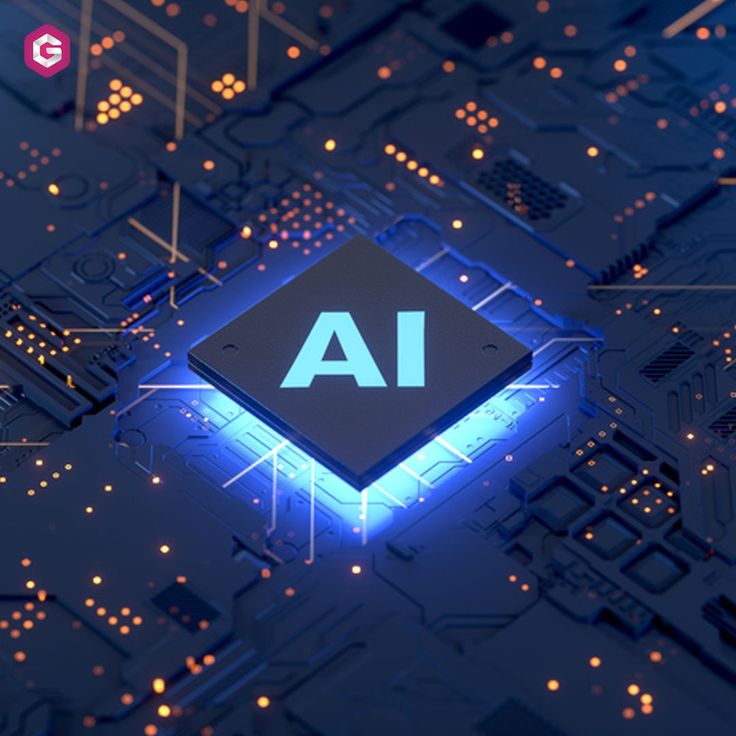Time series forecasting is a vital analytical technique used to predict future values based on previously observed data. With the advent of deep learning, Recurrent Neural Networks (RNNs) have emerged as powerful tools for modeling sequential data, making them particularly suited for time series forecasting. This article will explore the fundamentals of time series forecasting with RNNs, highlighting their architecture, applications, and best practices.
1. Introduction
Time series forecasting involves analyzing data points collected over time to identify patterns and trends that can be used for future predictions. Traditional statistical methods have been widely used in this area, but recent advancements in machine learning and deep learning have introduced more robust techniques. RNNs, designed specifically for sequential data, excel at capturing temporal dependencies, making them an excellent choice for time series forecasting.
2. Understanding Time Series Data
Time series data consists of observations collected at regular intervals, exhibiting temporal ordering. Key characteristics include:
- Temporal Ordering: The sequence of observations matters; the data points are time-dependent.
- Seasonality and Trends: Time series data often displays recurring patterns (seasonality) and long-term movements (trends).
Challenges in time series data, such as non-stationarity (where statistical properties change over time), can complicate the modeling process.

3. Recurrent Neural Networks (RNNs)
RNNs are a type of neural network specifically designed to process sequential data. The architecture consists of input, hidden, and output layers, where connections between neurons allow information to persist, enabling the network to maintain a “memory” of previous inputs.
- Hidden States and Memory: RNNs utilize hidden states to capture information about previous inputs, which is essential for time series data where the current observation depends on past values.
- Advantages: RNNs can effectively model complex relationships in sequential data, capturing long-term dependencies that traditional models might miss.
4. Types of RNNs for Time Series Forecasting
There are several variations of RNNs that enhance their performance for time series forecasting:
- Standard RNNs: Basic RNNs can model sequences but may struggle with long-term dependencies due to issues like vanishing gradients.
- Long Short-Term Memory (LSTM) Networks: LSTMs address the limitations of standard RNNs by incorporating memory cells and gates, allowing them to retain information for longer periods and mitigate the vanishing gradient problem.
- Gated Recurrent Units (GRUs): GRUs simplify the LSTM architecture while maintaining similar performance, making them faster to train. They are often preferred in scenarios where computational efficiency is a concern.
Selecting the appropriate RNN variant depends on the specific forecasting task and data characteristics.
5. Data Preparation for RNNs
Data preparation is crucial for achieving optimal forecasting results:
- Data Preprocessing: Normalize and scale the data to ensure consistent input for the RNN. This step helps the model learn effectively.
- Sequence Creation: Create input-output pairs from the time series data. For example, if predicting the next value based on the past 10 observations, form sequences of 10 past values as input.
- Train-Test Split: Split the data into training and testing sets while maintaining the temporal order. Ensure the test set contains the most recent observations to evaluate model performance realistically.
- Handling Missing Values and Outliers: Use appropriate techniques to manage missing data (e.g., interpolation) and outliers, which can distort the model’s predictions.
6. Building an RNN Model for Time Series Forecasting
Building an RNN model involves several steps:
- Defining the Model Architecture: Design the architecture, specifying the number of layers, the number of units in each layer, and how they connect. Common choices include stacking LSTM or GRU layers for deeper learning.
- Activation Functions and Loss Functions: Choose suitable activation functions (e.g., ReLU, sigmoid) and loss functions (e.g., Mean Squared Error) that align with the forecasting goals.
- Compilation and Training: Compile the model with an optimizer (e.g., Adam) and train it using the prepared data. Monitor training performance to ensure the model learns effectively.
- Hyperparameter Tuning: Experiment with hyperparameters such as learning rate and batch size to optimize model performance. Techniques like grid search can help identify the best parameters.
7. Evaluating Model Performance
Evaluating the model’s forecasting accuracy is essential to understand its effectiveness:
- Metrics: Common evaluation metrics include Mean Absolute Error (MAE), Mean Squared Error (MSE), Root Mean Squared Error (RMSE), and Mean Absolute Percentage Error (MAPE). Each metric offers different insights into model performance.
- Visualization: Visualizing model predictions against actual values can help identify areas where the model performs well or struggles.
- Cross-Validation: Employ techniques like rolling forecasting origin or time-based cross-validation to assess how well the model generalizes to unseen data.
8. Challenges and Limitations of RNNs
While RNNs are powerful, they come with challenges:
- Vanishing Gradients: Standard RNNs can suffer from vanishing gradient problems, making it difficult to learn long-term dependencies. LSTMs and GRUs help mitigate this issue.
- Training Time: RNNs, especially LSTMs and GRUs, can be computationally intensive, requiring significant time and resources to train.
- Complexity: As the architecture grows in complexity, it becomes crucial to avoid overfitting, which can happen if the model is too intricate relative to the amount of training data.

9. Applications of RNNs in Time Series Forecasting
RNNs have been successfully applied in various real-world scenarios:
- Finance: Stock price prediction is a common application, where RNNs analyze historical prices to forecast future movements.
- Weather Forecasting: RNNs can model complex weather patterns by analyzing historical climate data.
- Demand Forecasting: Retail and supply chain companies use RNNs to predict product demand based on past sales data, helping to optimize inventory levels.
Real-world case studies illustrate the effectiveness of RNNs in enhancing forecasting accuracy across different domains.
10. Future Trends in RNNs and Time Series Forecasting
The field of time series forecasting continues to evolve:
- Advancements in RNN Architectures: New techniques, such as attention mechanisms and Transformers, are being integrated into forecasting models to improve performance further.
- Integration with Other Machine Learning Methods: Combining RNNs with other models (e.g., traditional statistical methods) can yield better results.
- Automation and AI: The increasing use of automated tools and AI in time series forecasting is streamlining the modeling process and enabling real-time analysis.
11. Conclusion
Recurrent Neural Networks have transformed the landscape of time series forecasting, providing powerful tools to capture complex temporal dependencies. By understanding their architecture, preparing data effectively, and evaluating model performance, practitioners can leverage RNNs to enhance forecasting accuracy. As the field progresses, exploring new techniques and remaining adaptable will be key to successful time series forecasting.
FAQs and Tips: Time Series Forecasting with Recurrent Neural Networks
FAQs
- What is time series forecasting?
- Time series forecasting involves predicting future values based on previously observed data points collected over time. It is widely used in various fields, including finance, economics, and environmental science.
- Why are Recurrent Neural Networks (RNNs) suitable for time series forecasting?
- RNNs are designed to handle sequential data, making them ideal for time series forecasting. They can maintain hidden states that capture information from previous time steps, allowing them to model temporal dependencies effectively.
- What are the main types of RNNs used in time series forecasting?
- The main types include:
- Standard RNNs: Basic architecture for sequential data.
- Long Short-Term Memory (LSTM): An advanced architecture that mitigates the vanishing gradient problem, making it effective for long-term dependencies.
- Gated Recurrent Units (GRUs): A simpler alternative to LSTMs that offers comparable performance with fewer parameters.
- What preprocessing steps are essential for time series data before using RNNs?
- Key preprocessing steps include normalization, sequence creation (input-output pairs), handling missing values, and removing outliers. Proper data preparation ensures that the RNN model learns effectively from the data.
- How can I evaluate the performance of my RNN model?
- Model performance can be evaluated using metrics like Mean Absolute Error (MAE), Mean Squared Error (MSE), Root Mean Squared Error (RMSE), and Mean Absolute Percentage Error (MAPE). Visualization of predictions against actual values also provides valuable insights.

- What are some common challenges faced when using RNNs for time series forecasting?
- Common challenges include:
- Vanishing Gradients: Standard RNNs may struggle with long-term dependencies.
- Computational Complexity: Training RNNs can be resource-intensive and time-consuming.
- Overfitting: Complex models may perform well on training data but poorly on unseen data.
- In what industries is time series forecasting with RNNs applied?
- RNNs are widely used in finance (stock price prediction), weather forecasting, demand forecasting in retail, and resource management in various sectors.
- What future trends should I be aware of in time series forecasting with RNNs?
- Emerging trends include the integration of attention mechanisms, hybrid models that combine RNNs with traditional statistical methods, and the increasing use of automated forecasting tools powered by AI.
- How often should I retrain my RNN model?
- Retraining frequency depends on the data dynamics. If there are significant changes in patterns or new data becomes available, consider retraining the model to ensure it remains accurate.
- What tools and libraries can I use for time series forecasting with RNNs?
- Popular libraries include TensorFlow and Keras for building RNN models, as well as
statsmodelsfor time series analysis. Python’spandaslibrary is useful for data manipulation and preprocessing.
- Popular libraries include TensorFlow and Keras for building RNN models, as well as
Tips for Successful Time Series Forecasting with RNNs
- Understand Your Data: Spend time analyzing your time series data to identify trends, seasonality, and other patterns. Visualization can be a helpful tool in this process.
- Experiment with Different RNN Architectures: Try using different types of RNNs (LSTMs, GRUs) and architectures to see which yields the best results for your specific forecasting task.
- Prioritize Data Quality: Clean and preprocess your data meticulously. Proper handling of missing values, outliers, and noise can significantly impact model performance.
- Use Cross-Validation Techniques: Employ time-based cross-validation methods to assess how well your model generalizes to new, unseen data. This will help you avoid overfitting.
- Tune Hyperparameters: Experiment with different hyperparameters, such as learning rate, batch size, and number of epochs, to optimize your model’s performance.
- Monitor Performance Regularly: Regularly evaluate your model against new data and update it as needed. Keeping track of performance metrics will help you spot any deterioration in predictive power.
- Leverage Visualization: Utilize visualization techniques to compare predictions with actual values, as this can provide insights into model strengths and weaknesses.
- Stay Updated with the Latest Trends: The field of time series forecasting is evolving rapidly. Stay informed about new methods, architectures, and best practices through research articles and online courses.
- Document Your Process: Keep detailed records of your modeling decisions, data sources, and performance metrics. This documentation can be invaluable for future reference and learning.
- Collaborate with Others: Engage with communities and forums focused on data science and time series forecasting to share insights, ask questions, and learn from others’ experiences.